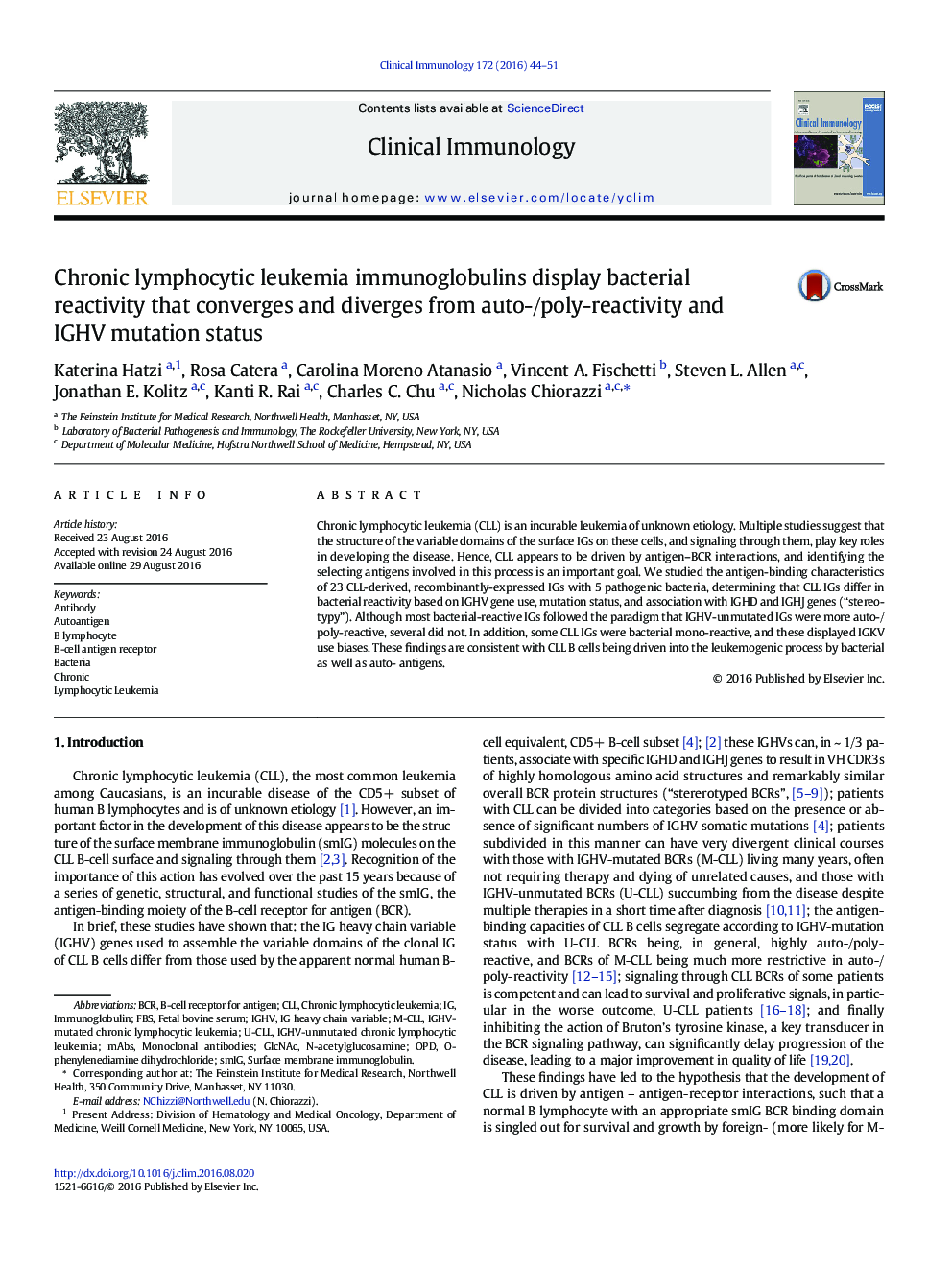| Article ID | Journal | Published Year | Pages | File Type |
|---|---|---|---|---|
| 5654992 | Clinical Immunology | 2016 | 8 Pages |
â¢In general, CLL IGs that bind multiple bacterial strains are auto-/poly-reactive.â¢Some mono-reactive bacterial IGs are auto-/poly-reactive.â¢Some broadly-reactive bacterial IGs are not auto-/poly-reactiveâ¢A few CLL IGs bound only one bacterial strain and these used the same IGKVs
ABSTRACTChronic lymphocytic leukemia (CLL) is an incurable leukemia of unknown etiology. Multiple studies suggest that the structure of the variable domains of the surface IGs on these cells, and signaling through them, play key roles in developing the disease. Hence, CLL appears to be driven by antigen-BCR interactions, and identifying the selecting antigens involved in this process is an important goal. We studied the antigen-binding characteristics of 23 CLL-derived, recombinantly-expressed IGs with 5 pathogenic bacteria, determining that CLL IGs differ in bacterial reactivity based on IGHV gene use, mutation status, and association with IGHD and IGHJ genes (“stereotypy”). Although most bacterial-reactive IGs followed the paradigm that IGHV-unmutated IGs were more auto-/poly-reactive, several did not. In addition, some CLL IGs were bacterial mono-reactive, and these displayed IGKV use biases. These findings are consistent with CLL B cells being driven into the leukemogenic process by bacterial as well as auto- antigens.
